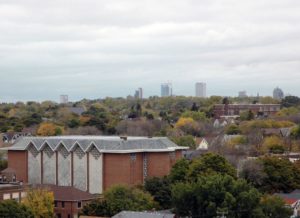The city of Milwaukee lost residents for the third straight year and has now added just 518 residents since the last census in 2010, according to new estimates from the U.S. Census Bureau.

The data, which estimate a city’s population as of July 1 in a given year, show Milwaukee’s population decreased by 2,157 from 2016 to 2017, a 0.4 percent decrease.
The drop marks the third straight year Milwaukee has seen population declines after drops of 3,504 in 2016 and 190 in 2015. Those declines have nearly wiped out all of the city’s population gains in the first half of the decade.
DeForest was the fastest growing of the 100 largest incorporated areas in the state during the year, adding 687 residents, a 7.1 percent increase. Other fast growing municipalities included Harrison, up 4.2 percent, and Middleton, up 3.3 percent.
Burlington and Hartford were the fastest growing southeastern Wisconsin municipalities last year, increasing 3.1 and 3 percent respectively. The two cities were the fourth and fifth fastest growing among the 100 largest municipalities in the state.
Other southeastern Wisconsin municipalities with a population increase of more than 1 percent included Menomonee Falls, 1.9 percent; Port Washington, 1.1 percent, city of Pewaukee, 1.1 percent, Oconomowoc, 1 percent, and Elkhorn, 1 percent.
Eleven area municipalities had percentage decreases greater than Milwaukee, led by Shorewood and West Allis, both down 0.8 percent. The other communities with percentage losses greater than Milwaukee included Whitefish Bay, Glendale, Greendale, South Milwaukee, Brown Deer, St. Francis, Greenfield, Sheboygan and Franklin.
Since the 2010 census, eight area municipalities have seen a decrease in population, led by Sheboygan, down 959 residents or nearly 2 percent. Racine has the largest net loss in residents, down 1,318, a 1.7 percent decrease. Other shrinking municipalities include Elkhorn, Whitefish Bay, Glendale, South Milwaukee, West Allis and Brown Deer.
The city of Pewaukee has been the fastest growing municipality since 2010 in the region among those that are among the 100 largest in the state, adding 1,281 residents, a 9.7 percent increase. Oconomowoc, Hartford, Oak Creek and Pleasant Prairie round out the top five, all with at least 5 percent growth in population.
Seven of the top 10 fastest growing municipalities in the state since 2010 are located in Dane County, led by Verona, up 23 percent. Others include Fitchburg, DeForest, Waunakee, Middleton, Oregon and Sun Prairie.
While the city of Madison has added 22,005 residents since 2010, its growth of 9.4 percent lands it 13th on the list of fastest growing cities, just behind Pewaukee.
Read more economic data reports at the BizTracker page.